Accepted Scientific Name: Mammillaria beneckei Ehrenb.
Bot. Zeitung (Berlin) 2: 833. 1844
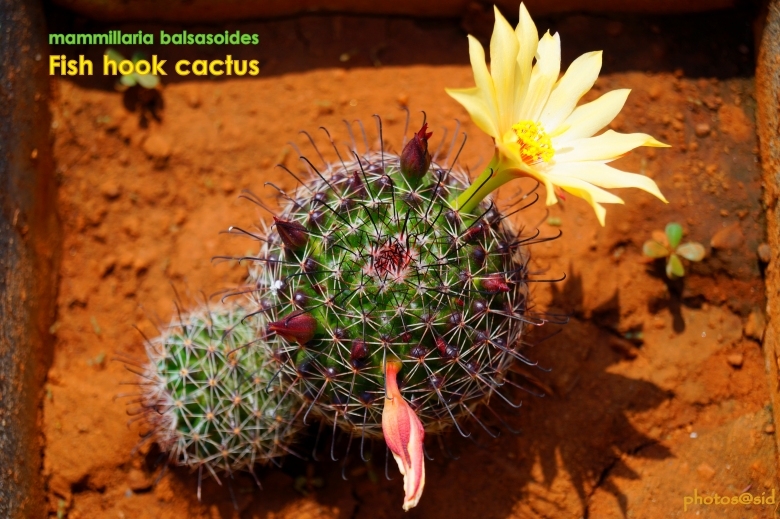
Mammillaria balsasoides Photo by: Siddhartthan Krishnan
A.k.a. fishhook cactus.
Origin and Habitat: Guerrero (Mexico, Northern America).
Synonyms:
See all synonyms of Mammillaria beneckei
back
Accepted name in llifle Database:Mammillaria beneckei Ehrenb.Bot. Zeitung (Berlin) 2: 833. 1844Synonymy: 19
back
Description: Mammillaria balsasoidesSN|9048]]SN|9056]] (Dolichothele balsasoidesSN|9057]]SN|9057]]) is a small spherical mammillaria with dark brown spines and relatively large yellow or yellow-orange flowers. There may be a slight variation in the colour and size of flowers. This cactus is generally included within (as a synonym of) Mammillaria beneckei, suggesting that there is not really a fundamental difference between the two, and hard to name accurately without knowing where they come from.
Derivation of specific name: The derivation of specific name balsasoides is unclear possibly referring to to the Rio Balsas, in the Mexican state of Guerrero.
For more details see: Mammillaria beneckeiSN|9056]]SN|9048]]
Subspecies, varieties, forms and cultivars of plants belonging to the Mammillaria beneckei group
 Mammillaria balsasoides R.T.Craig: same as: Mammillaria beneckei. Distribution: Rio Balsas, Guerrero (Mexico, Northern America).
Mammillaria balsasoides R.T.Craig: same as: Mammillaria beneckei. Distribution: Rio Balsas, Guerrero (Mexico, Northern America). Mammillaria beneckei Ehrenb.: has white radial spines and brown hooked centrals. The flowers are bright yellow about 3 cm wide, one of the largest of its genus. Distribution: Southern Mexico in Michoacan, Nayarit, Sinaloa, Colima, Jalisco, Mexico, Oaxaca, and Guerrero.
Mammillaria beneckei Ehrenb.: has white radial spines and brown hooked centrals. The flowers are bright yellow about 3 cm wide, one of the largest of its genus. Distribution: Southern Mexico in Michoacan, Nayarit, Sinaloa, Colima, Jalisco, Mexico, Oaxaca, and Guerrero.
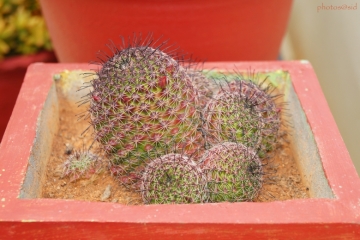 Mamillaria balsasoides with changing colours. Photo by: Siddhartthan Krishnan
Mamillaria balsasoides with changing colours. Photo by: Siddhartthan Krishnan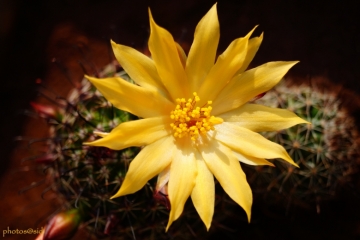 Mamillaria balsasoides. Closeup of the yellow flower Photo by: Siddhartthan Krishnan
Mamillaria balsasoides. Closeup of the yellow flower Photo by: Siddhartthan Krishnan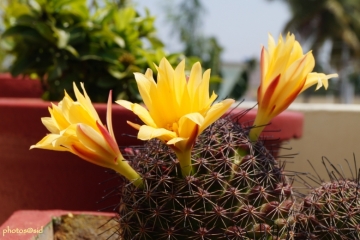 Mamillaria balsasoides with after blooming. Photo by: Siddhartthan Krishnan
Mamillaria balsasoides with after blooming. Photo by: Siddhartthan Krishnan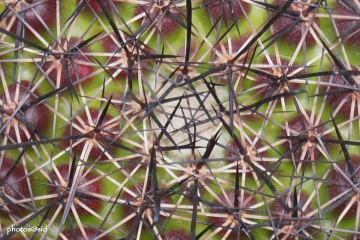 Mamillaria balsasoides. Stems are almost without wooll. Photo by: Siddhartthan Krishnan
Mamillaria balsasoides. Stems are almost without wooll. Photo by: Siddhartthan Krishnan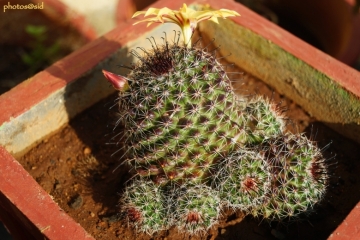 Mamillaria balsasoides. With developed buddings. Photo by: Siddhartthan Krishnan
Mamillaria balsasoides. With developed buddings. Photo by: Siddhartthan Krishnan Mamillaria balsasoides. Pre-stage flower bud. Photo by: Siddhartthan Krishnan
Mamillaria balsasoides. Pre-stage flower bud. Photo by: Siddhartthan Krishnan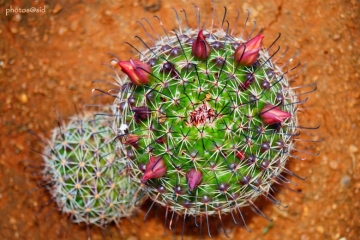 Mammillaria balsasoides Photo by: Siddhartthan Krishnan
Mammillaria balsasoides Photo by: Siddhartthan Krishnan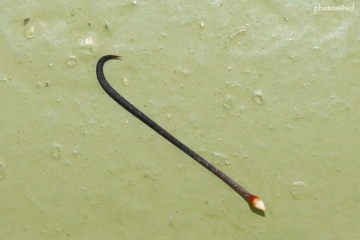 Mamillaria balsasoides. Separate hook. Photo by: Siddhartthan Krishnan
Mamillaria balsasoides. Separate hook. Photo by: Siddhartthan KrishnanCultivation and Propagation: This is a great looking cactus that offsets eventually forming wonderful clumps up to 50 cm in diameter, but is very sensitive to low temperatures and needs extra heat in winter.
Growth rate: From seed, it will fill a large pot in just a few years. Offsets are produced at the base, and are distributed somewhat randomly. Since the plant can make wide spreading mounds, shallow pots of large diameter will be required as the plant ages. It is not particularly difficult on own roots. No special cultural requirements.
Soils: It likes very porous standard neutral cactus mix soil.
Repotting: Use pot with good drainage.
Watering: It should be watered generously during the growing season, but do not overwater (Rot prone), keep dry in winter. Water it less than average if in bigger pots, small pots preferred.
Fertilization: Feed with a high potassium fertilizer in summer.
Hardiness: This species is very sensitive to to frost and needs extra heat in winter, but less sensitive if kept on the dry side prior to, and during, cold weather. However warmth throughout the year will increase the grower's success (8-12°C during rest season).
Exposition: Outside bright, hot conditions or afternoon shade, inside it needs bright light, and some direct sun. Turns brown or reddish in intense light, which is needed to induce flowering.
Strong light encourages heavy wool and spine production.
Uses: It is an excellent plant for container growing. It always looks good and stays small.
Pests & diseases: It may be attractive to a variety of insects, but plants in good condition should be nearly pest-free, particularly if they are grown in a mineral potting-mix, with good exposure and ventilation. Nonetheless, there are several pests to watch for:
- Red spiders: Red spiders may be effectively rubbed up by watering the plants from above.
- Mealy bugs: Mealy bugs occasionally develop aerial into the new growth among the wool with disfiguring results, but the worst types develop underground on the roots and are invisible except by their effects.
- Scales: Scales are rarely a problem.
- Rot: Rot is only a minor problem with cacti if the plants are watered and “aired” correctly. If they are not, fungicides won't help all that much.
Propagation: Division, direct sow after last frost or (often) graft. Seeds germinate in 7-14 days at 21-27° C in spring, remove the glass cover gradually as the plants develops and keep ventilated, no full sun for young plants! To make a cutting twist off a branch and permit it to dry out a couple of weeks, lay it on the soil and insert the stem end partially into the soil. Try to keep the cutting upright so that the roots are able to grow downward.
Your Photos

by Siddhartthan Krishnan




















